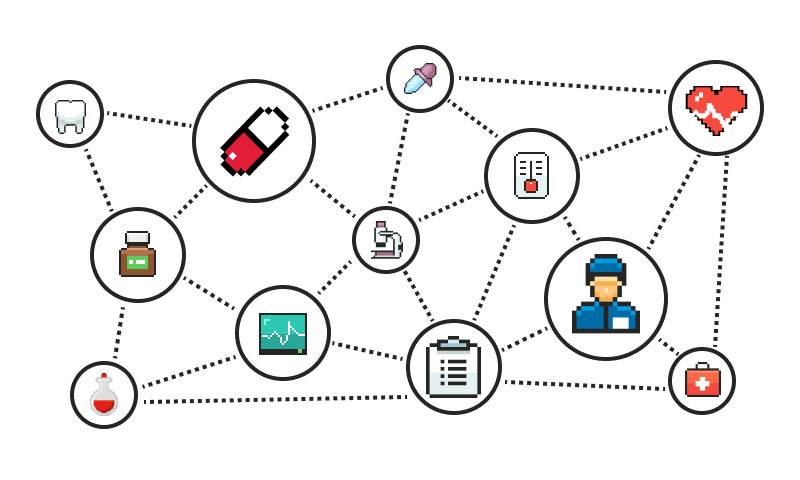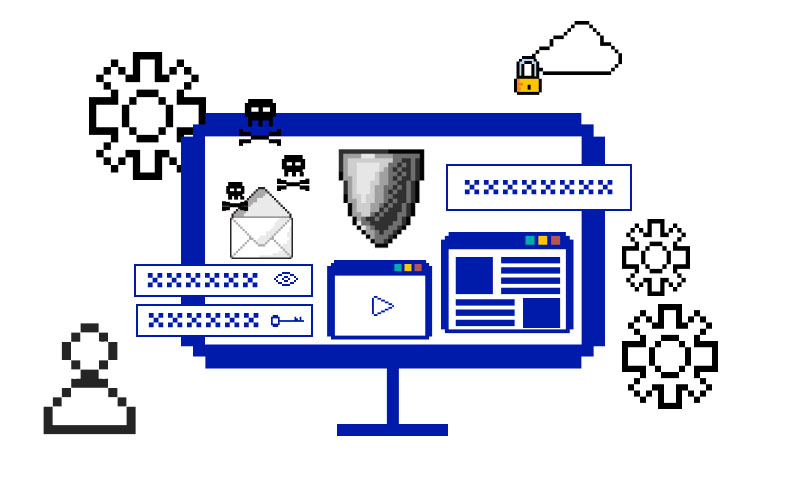In today’s digital age, hackers are becoming increasingly adept at breaching healthcare data – and healthcare organizations are finding it harder to protect themselves. But who is behind these attacks? What motivates them and why is healthcare such an attractive target? In this article, we will explore the implications of healthcare data breaches, the adopted methodology for analyzing them, the data sources used in our research, and the financial impact of these attacks. We’ll also look into forecasting potential breaches and offer some insight into how we can prevent future cyber-attacks on the healthcare industry. So buckle up – it’s time to dive into the world of hacking healthcare!
Healthcare data breaches are a growing threat to both patients and healthcare providers. Cyber attackers target the healthcare industry for its valuable patient information, which can be used for identity theft or other malicious activities. Such breaches can have far-reaching implications, from financial losses and reputational damage to regulatory fines and legal liabilities. This is why it’s so important for healthcare providers to stay on top of their cyber security measures. From implementing advanced encryption protocols to regularly updating software, healthcare organizations must take all the necessary steps to protect their sensitive data from potential threats. Additionally, healthcare providers should also consider using AI-powered security solutions to detect any suspicious activity before it becomes a major issue. By taking proactive measures and staying vigilant, healthcare organizations can reduce their risk of becoming victims of a data breach.
Healthcare data breaches are a growing concern in the modern world, as they can lead to serious financial losses, reputational damage, and legal liabilities. In recent years, cyber attackers have been targeting the healthcare industry for its valuable patient information. Healthcare providers must take proactive measures to protect their sensitive data from potential threats and ensure that they remain compliant with relevant regulations.
Healthcare providers must remain vigilant in protecting their sensitive data from potential cyber threats. By utilizing the latest security solutions and adopting a proactive approach, they can ensure that their patient information remains safe and secure. In the next section, we will explore the adopted methodology for reducing the risks of healthcare data breaches.
Adopted Methodology
The adopted methodology for reducing healthcare data breaches focuses on the implementation of advanced encryption protocols, regular software updates, and AI-powered security solutions. Healthcare providers must ensure that they are using the most up-to-date encryption algorithms to protect their patient’s information. By regularly updating their software, organizations can reduce the risk of a breach due to outdated systems. Additionally, AI-based solutions can detect suspicious activity before it leads to a data breach. By implementing these measures, healthcare providers can better protect their confidential information and reduce their risk of becoming victims of cyber attacks.
By taking the necessary steps to secure patient information, healthcare providers can help protect the privacy of their patients and prevent costly data breaches. To further enhance data security, let’s explore what types of data sources are available to healthcare organizations.
Data Sources
When it comes to protecting patient data, healthcare providers must understand the different types of data sources available. The most common sources are electronic health records (EHRs) and medical devices. EHRs contain information such as patient history, diagnoses, treatments, and medications. Medical devices provide real-time data about a patient’s vital signs. In addition to these primary sources, there are also secondary sources such as claims processing systems and other administrative documents. It is important for healthcare organizations to understand the risks associated with each of these sources so that they can take steps to secure them.
To protect these data sources, healthcare organizations should implement appropriate security protocols such as encryption algorithms, access control systems, user authentication measures, and two-factor authentication solutions. Additionally, healthcare providers should regularly update their software systems to ensure that they remain secure against cyber threats. By taking the necessary steps to secure their data sources, healthcare providers can help protect their patients’ confidential information and reduce the risk of a data breach.
By taking the necessary steps to protect patient data sources, healthcare providers can rest assured that their patient’s confidential information is safe and secure. But what about when a breach does occur? In the following section, we’ll discuss some of the most common causes of data breaches in the healthcare industry and how they can be prevented.
Analysis of Data Breaches
Recent data leaks in the healthcare industry are a serious problem. In 2019 alone, there were over 400 reported data breaches in the United States, resulting in the exposure of nearly 28 million patient records. To help organizations prevent data breaches, it is important to analyze what causes them. Common causes of data breaches include improper access controls, unauthorized access to systems, and weak or stolen passwords. Additionally, malicious actors can exploit vulnerabilities in software and hardware to gain access to confidential information.
To prevent data breaches from occurring, healthcare organizations should regularly review their security protocols and audit their systems for potential vulnerabilities. They should also implement user authentication measures such as two-factor authentication and enforce strong password policies. Additionally, they should ensure that all software is up-to-date and properly configured with the latest security patches. By taking these steps, healthcare providers can help ensure that patient data remains secure and protected from malicious actors.
Data breaches in the healthcare industry can have devastating effects. By taking steps to protect patient data and strengthen security protocols, healthcare providers can help ensure that confidential information remains secure and protected. Now, let’s take a closer look at how healthcare organizations can analyze data breaches and develop strategies to prevent them.
Healthcare Data Breach Analysis
Healthcare data breach analysis is an important part of preventing unauthorized access to confidential information. To begin, organizations should review their security protocols and audit their systems for potential vulnerabilities. Additionally, they should assess user authentication measures such as two-factor authentication and the use of strong passwords. Furthermore, healthcare providers should ensure that all software is up-to-date and properly configured with the latest security patches. By taking these steps, healthcare providers can help ensure that patient data remains secure and protected from malicious actors. Regularly analyzing data breaches can also help organizations identify weaknesses in their systems and put measures in place to mitigate them before a breach occurs. With the right strategies in place, healthcare providers can take proactive steps to protect patient data and prevent unauthorized access.
HIPAA and OCR Data Breach Report Analysis
The US Department of Health and Human Services Office for Civil Rights (OCR) is responsible for ensuring that healthcare organizations comply with the Health Insurance Portability and Accountability Act (HIPAA). As part of this responsibility, OCR regularly publishes data breach reports. These reports provide a comprehensive overview of the state of HIPAA compliance among healthcare providers. By analyzing these reports, organizations can gain valuable insight into the types of breaches occurring in their industry, as well as potential weaknesses in their own security protocols. Additionally, analyzing these reports is beneficial for understanding how to improve upon existing protections against unauthorized access to confidential information. By understanding the types of data breaches occurring and taking proactive steps to mitigate them, healthcare organizations can help protect patient data from malicious actors.
Financial Effect of Data Breaches
Data breaches can have devastating financial effects on organizations, individuals, and entire countries. The financial costs of data breaches can range from the direct expenses incurred in response to a breach (such as notification services, legal fees, and cyber security measures) to indirect costs such as lost business/customer trust, reputational damage, and regulatory fines. In recent years, healthcare data breaches have become increasingly common due to the increasing reliance on digital technology. As a result of these breaches, healthcare organizations have had to bear significant financial losses due to litigation fees and settlements with patients whose data was compromised. Additionally, patients are often forced to pay out-of-pocket expenses for identity theft protection services if their personal information is exposed to a data breach. As such, it is important for healthcare organizations to take proactive steps to protect patient data from unauthorized access or misuse. By investing in proper security protocols and employee training programs, healthcare organizations can reduce the likelihood of a costly data breach occurring.

Forecasting of Healthcare Data Breaches
Forecasting healthcare data breaches is an important tool for organizations to better understand the risks and costs associated with them. By using time series analysis, healthcare organizations can analyze past data breaches and predict potential future ones. Through this method, organizations can detect trends in breach frequency, cost, and affected patients. This allows them to identify weaknesses in their security systems and make any necessary adjustments before a breach occurs. Additionally, forecasting healthcare data breaches helps organizations plan for the financial implications of a breach before one happens. By taking these steps, healthcare organizations can reduce the risks of costly litigation fees, lost business/customer trust, reputational damage, or regulatory fines associated with data breaches.
Forecasting healthcare data breaches is essential for organizations to stay ahead of the curve and protect their patients’ data. By taking proactive steps such as time series analysis, healthcare organizations can be prepared for any potential breaches and reduce the financial and reputational costs associated with them. Now, let’s explore how we can use our findings to draw conclusions about forecasting healthcare data breaches in the next section.
The bottom line
Our analysis of healthcare data breaches suggests that they are increasing in frequency and cost, and will continue to do so in the future. Through time series analysis, organizations can detect trends in breach frequency, cost, and affected patients. This allows them to identify weaknesses in their security systems and make any necessary adjustments before a breach occurs. Additionally, forecasting healthcare data breaches helps organizations plan for the financial implications of a breach before one happens. In order to stay ahead of the curve and protect their patients’ data, healthcare organizations should take proactive steps such as time series analysis to prepare for potential breaches. By taking these preventive measures, organizations can reduce the risks associated with costly litigation fees, lost business/customer trust, reputational damage, or regulatory fines.
As the healthcare industry continues to grow, it is essential that organizations take proactive steps to protect their patient data. By utilizing time series analysis and other security measures, organizations can mitigate the costs and risks associated with a data breach. However, hackers are now beginning to shift their focus towards smaller hospitals, clinics, and EHRs; organizations must remain vigilant in order to stay ahead of these threats.
Penetration testing (or “pentest”) is a proactive security measure that can help organizations identify and address potential vulnerabilities before they are exploited by hackers. Through pen-testing, organizations can evaluate the security of their systems, networks, and applications to determine if they are vulnerable to attack. Additionally, pen tests provide information on how an attacker might exploit weaknesses in order to gain access to sensitive data or systems. By conducting regular pen tests, healthcare organizations can identify potential security issues and take steps to fix them before a breach occurs. Additionally, regular penetration tests can help healthcare organizations stay ahead of the curve by detecting any emerging threats before they become a problem. By taking these proactive measures, healthcare organizations can reduce the risks associated with costly litigation fees, lost business/customer trust, reputational damage, or regulatory fines.
